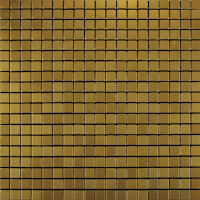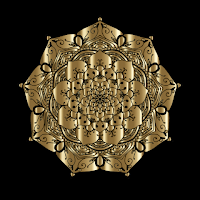Another ingenious verse is the Palindrome, from πάλιν and δρóμος, to flow or run back; sometimes called Sotadic verse, from Sotades, their inventor, though a higher (or a lower) authority is sometimes given; the first palindrome having been, according to one account, the impromptu of an unfortunate demon, while carrying most unwillingly a portly canon of Combremer from Bayeux to Rome; it reads the same either backwards or forwards, which is the essential of a palindrome:
Signa te, signa, temere me tangis et angis,
Roma tibi subito motibus ibit amor.Another legend refers this palindrome to
Satan himself, while carrying St. Martin on his shoulders.
Its tranflation is, „Cross yourself, cross
yourself; you annoy and threaten me unnecessarily“ for, owing to my exertions,
you will soon reach Rome, your object."
Other examples are:
Si bene te tua Iaus taxat, sua laute tenebis,
Sole medere pede, ede, perede melos.Again:
Et necat eger amor non Roma rege tacente,
Roma reges una non anus eger amor.In which the word serves as a pivot.
Each word in the line:
Odo tenet mulum, mappam madidam tenet Anna,
is a perfect palindrome.
The line
Sator arepo tenet opera rotas,
besides being a palindrome, can be arranged
in a square, when it will be perceived that the firft letters of each of its words
spell its firft word Sator; the second, from the second of each, its second
word Arepo, and so on;
thus:
S A T O R
A R E P O
T E N E T
O P E R A
R O T A S
The same properties exist in the Latin words Time,
Item, Meti, and Emit;
thus:
T I M E
I T E M
M E T I
E M I T
The following epitaph at the entrance of the
Church of San Salvador, in the city Oviedo, in Spain, erected by Prince Silo,
may be read two hundred and seventy different ways, by beginning with the S in
the centre
Silo Princeps Fecit
T I C E F S P E C N C E P S F E C I T
I C E F S P E C N I N C E P S F E C I
C E F S P E C N I R I N C E P S F E C
E F S P E C N I R P R I N C E P S F E
F S P E C N I R P O P R I N C E P S F
S P E C N I R P O L O P R I N C E P S
P E C N I R P O L I L O P R I N C E P
E C N I R P O L I S I L O P R I N C E
P E C N I R P O L I L O P R I N C E P
S P E C N I R P O L O P R I N C E P S
F S P E C N I R P O P R I N C E P S F
E F S P E C N I R P R I N C E P S F E
C E F S P E C N I R I N C E P S F E C
I C E F S P E C N I N C E P S F E C I
T I C E F S P E C N C E P S F E C I T
On the tomb are inscribed these letters:
H. S. E. S. S. T. T. L.
The letters employed in this square being the
initials of the words,
Hic situs est Silo, sit tibi terra levis.
Here lies Silo, may the earth lie light on
him.
The lawyer's motto,
Si nummis immunis
Give me my fee, and I warrant you free,
Is a palindrome.
In the time of Queen Elizabeth, a noble lady,
who had been forbidden to appear at court in consequence of some suspicions
against her, took for the device on her feal, the moon partly obscured by a
cloud, with the palindromic motto:
Ablata at alba,
Secluded, but pure.
Taylor, the water poet, writes:
Lews did I live, and evil did I dwel.
Another English palindrome is:
Snug & raw was I, ere I saw war &
guns.
And one is put into the mouth of Napoleon the
Great:
Able was I ere I saw Elba.
There is an enigma, in which the initials of
five palindromic words are to be fought, to form the required answer; e. g.:
First find out a word that doth silence proclaim,
And that backwards and forwards is always the same ;
Then next you must find out a feminine name,
That backwards and forwards is always the same ;
An act, or a writing on parchment, whose name,
Both backwards and forwards is always the same ;
A fruit that is rare, whose botanical name,
Read backwards and forwards is always the same ;
A note used in music which time doth proclaim,
And backwards and forwards is always the same ;
Their initials connected, a title will frame
(That is justly the due of the fair married dame,)
Which backwards and forwards is always the same.There is a well-known Greek inscription on the
font at Sandbock, in Cheshire, England, as well as in the Church of St Sophia,
at Constantinople:
Νίψον ανομήματα, μη μόναν όψιν.
That is, freely, „Purify the mind as well as
the body.“
The following verses are reversible in sense,
as well as in words, by being read backwards:
Prospicimus modo, quod durabunt tempore longo,
Fœdera, nec patriæ pax cito dissugiet.
Dissugiet cito pax patriæ, nec fœdera longo,
Tempore durabunt quod modo prospicimus.
Patrum dicta probo, nec sacris belligerabo.*(* Expressing the sentiments of a Romanist or
a Huguenot, as it is read forwards or backwards.)
The following are promiscuous examples:
Retro mente labo, non metro continuabo.
Continuabo metro ; non labo mente retro.
Sacrum pingue dabo, non macrum sacrificabo.
Sacrificabo macrum non dabo pingue sacrum.It is observable that the last above
hexameter, from Santa Marca Novella, Florence, refers, in the first instance,
to the sacrifice of Abel (Gene sis iv. 4); reversed, as in the second line,
the reference is to the sacrifice of Cain (Gen. iv 3)
Arca serenum me gere regem, munere sacra,
Solem, arcas, animos, omnia sacra, melos.Epitaph on Henry IV., by Paschasms.
And Addison tells of a palindrome, called
"The Witches Prayer," which "fell into verse, when read either
backwards or forwards, excepting only that it blessed one way and cursed the
other."
In 1802 was printed at Vienna a small volume
of palindromes, written in ancient Greek, by Ambrosius, a modern Greek.
The volume, which was called Πóιημα χαρχινιχòν,
contains four hundred and fifty-six lines, every one of which is palindromic.
Here follows a few of them:
Ισα πασι Ση τε γη, Συ σ Μσυσηγετης ις απασι.
Νεαν ασω μελιφωνον, ώ φιλε, Μωσαν, αεν.
Ω λακωνικε, σε μονω τω Νομε, σε κινω καλω.
Αρετα πηγασε σε σα γη πατερα.
Σωτηρ συ εσω, ώ ελεε ΰεε λεω ος ευς ρητως.Palindromic verse, which exactly reverses its
meaning upon being read backwards, is some times called Sidonian verse, such
having been first constructed by Sidonius.
The example given below was written in praise
of Pope Clement VI. (some say Pius II).
The poet, fearing, however, that he might not
receive as great a reward as, in his own estimation, he deserved, retained the
power of converting his flattery into abuse, by simply giving his friends the
cue, to commence at the last word, and read backwards:
Pauperibus tua das gratis, nec munera curas
Curia Papalis, quod modo percipimus.
Laus tua, non tua fraus, virtus non copia rerum,
Scandere te faciunt, hoc decus eximium.
Conditio tua sit stabilis, nec tempore parvo
Vivere te faciat hic Deus omnipotens.Of the same kind, are these three distiches
by Du Bellay, a French poet:
AD JULIUM III. PONTIFICEM MAXIMUM.
Pontifici siia fint Divino Numine tuta
Culmina, nec montes hos petat Omnipotens.AD CAROLUM V. CÆSAREM.
Cæsareum tibi sit felici sidere nomen,
Carole, nec fatum sit tibi Cæsareum.AD FERDINANDUM ROMANORUM REGEM.
Romulidum bone Rex, magno sis Cæsare major,
Nomine, nec satis, aut minor imperio.A complete specimen appears in the line applicable
either to Cain or Abel, being also hexameter in the one cafe, and pentameter in
the other; just given, in treating of palindromes.
The line,
Patrum dicta probo, nec facris belligerabo
is a Sidonian, as well as several others before
given, among the palindromes.
Dean Swift used to write to Dr. Sheridan in words
unintelligible as they stood, but capable of being turned into tolerable
English by being read backwards.
Thus:
Mi sana. Odiofo ni mus rem. Moto ima os illud
dama nam!
(I'm an ass. O, so I do in summer. O, Tom, I
am so dull, I a mad man!) •
The Epitaph. In Cunwallow Church yard,
Cornwall, England, is to be found the following, which, like the specimen on
page 47, "Silo Princeps Fecit," partakes of the palindromic character,
decipherable from any possible point of vision, so that "he may run that
readeth it:"
Shall we all die?
We shall die all,
All die shall we —
Die all we shall.
James
Appleton Morgan - Macaronic poetry (collected with an intr. by J. A. Morgan), Hurd
& Houghton, New York, 1872.
Photo: Pixabay/GDJ





